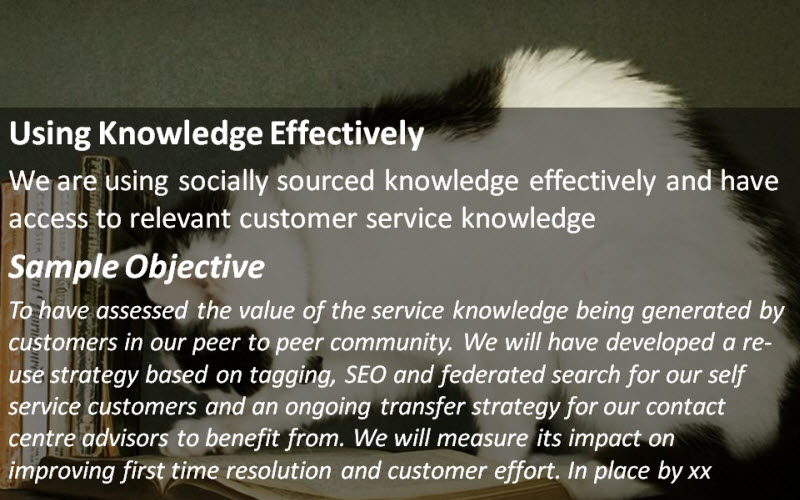
One of the by products of helping customers solve their problems is new service know-how. A cost benefit of social customer service is that a publically posted solution is often of ongoing value to others. This reduces the need and thus cost of live assistance. Arguably it also improves customer experience since a solution is found more readily and conveniently.
The same argument also applies to know-how that is produced in peer to peer support communities. In complex, fast changing markets, it has long been recognised that a well run ‘super user’ group will outperform in-house advisors. Obviously in terms of costs, but also in terms of the quality of their personal know-how.
However the production of new service knowledge is just part of the required competency. Its availability and use is the other part of the challenge.
For instance, ensuring peer to peer generated knowledge is available to the advisors serving through traditional channels is often a key challenge. Typically their new knowledge is sourced, approved and launched on a much slower cycle. Therefore these teams will lag in access to the latest service knowledge. If so, are they equipped with a federated search capability? One which can access every relevant source of service knowledge included peer to peer?
Another issue is to maximise customers’ access to the answers they are looking for through an effective promotion strategy. As demand for self service grows in support of the ‘autonomous’ customer, so too must its visibility.
In peer to peer communities, this becomes an ongoing UX issue in how knowledge/topics are organised and indexed to better promote what is available. In terms of customers who begin their journey using a search engine, it is all about effective SEO to ensure the answers are discoverable. Ideally ‘above the fold’. In both cases this results in popular topics becoming available as 24×7 self service solutions without any need of further live assistance.
Surrounding all this activity is an even greater workflow: driven by the goal of reducing customer effort. It provides an ongoing analysis of the type of service know-how being requested and figures out which ones can be converted from live delivery to self service since human delivery is not adding any particular value. In the context of social customer service the end results could be a tweeted response with a bitly link to a YouTube ‘know-how’ video.
Using knowledge effectively is the route to smart service.
Other competencies in the framework for social customer service excellence can be accessed in ‘Related Content’.




